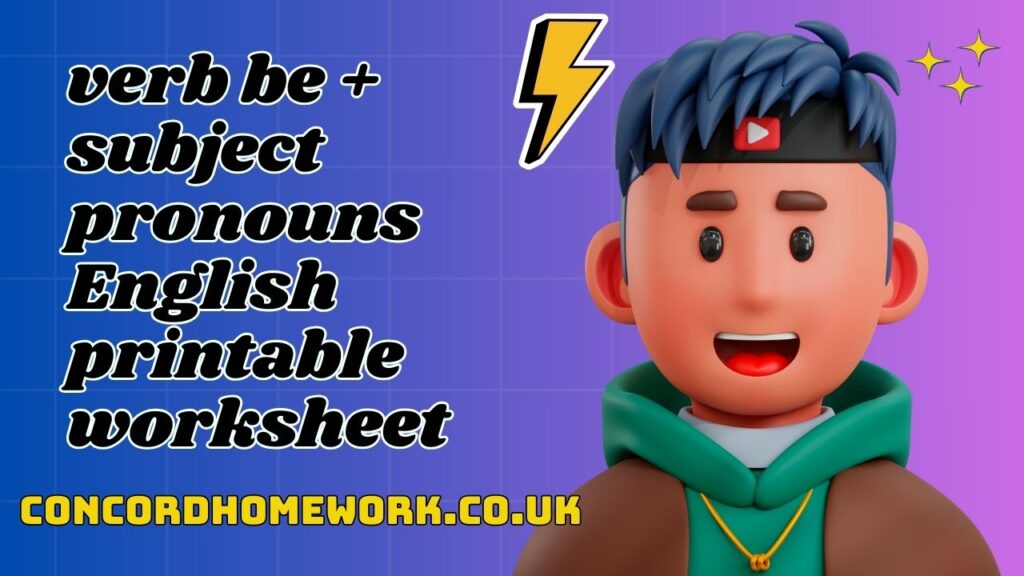Complete column 1 with words from the list.
Then write the contractions in column 2.
Complete the sentences with ‘m ‘s or ‘re.
Complete the conversations with a subject
pronoun (I, She, etc.) and ‘m, ‘s, or ‘re.
This worksheet is about verb be and subject pronouns in English. Students practice by answering the activities. The worksheet has an answer key.
* Download This English worksheet: “verb be + subject pronouns English printable worksheet”.
Here is a table explaining the use of the verb “be” with subject pronouns, along with examples for each.
| Subject Pronoun | Verb “Be” (Present) | Verb “Be” (Past) | Explanation | Example (Present) | Example (Past) |
|---|---|---|---|---|---|
| I | am | was | Used when the speaker refers to themselves. | I am a student. | I was a student last year. |
| You | are | were | Used when speaking directly to one person or more. | You are a teacher. | You were a teacher in 2010. |
| He | is | was | Used to refer to a male person or sometimes an animal. | He is a doctor. | He was a doctor before he retired. |
| She | is | was | Used to refer to a female person or sometimes an animal. | She is a lawyer. | She was a lawyer until last year. |
| It | is | was | Used to refer to an object, animal, or abstract concept when the gender is unknown or irrelevant. | It is a beautiful painting. | It was a beautiful painting. |
| We | are | were | Used when the speaker includes themselves and one or more other people. | We are friends. | We were friends in school. |
| They | are | were | Used to refer to a group of people, animals, or things. | They are neighbors. | They were neighbors before moving. |
Additional Notes:
- Verb “Be” (Present):
- “Am” is used exclusively with “I.”
- “Is” is used with “he,” “she,” and “it.”
- “Are” is used with “you,” “we,” and “they.”
- Verb “Be” (Past):
- “Was” is used with “I,” “he,” “she,” and “it.”
- “Were” is used with “you,” “we,” and “they.”
Explanation:
The verb “be” is an essential verb in English that serves as a linking verb, connecting the subject of a sentence with a subject complement or describing the subject’s state or condition. The form of “be” changes based on the subject pronoun and the tense (present or past).
Examples:
- Present Tense:
- “I am happy.”
- “You are welcome.”
- “He is tall.”
- “She is intelligent.”
- “It is raining.”
- “We are ready.”
- “They are playing.”
- Past Tense:
- “I was tired.”
- “You were absent.”
- “He was late.”
- “She was surprised.”
- “It was broken.”
- “We were excited.”
- “They were waiting.”
This table and accompanying notes provide a comprehensive understanding of how the verb “be” is used with different subject pronouns in both present and past tenses.
“Thank you for taking the time to explore this topic with us! We hope you found the information helpful and insightful. Have any thoughts, questions, or additional examples to share? We’d love to hear from you in the comments below!
Don’t forget to spread the word by sharing this blog with your friends, family, and colleagues. Together, let’s continue to learn, grow, and connect with the world around us. Happy reading and sharing!”
Follow Me On TikTok:
Follow me!🫡🤗👍🏾
Follow me on YouTube:
Subscribe!🫡🤗👍🏾
What topics/worksheets do you need? Let me know in the comments below!

